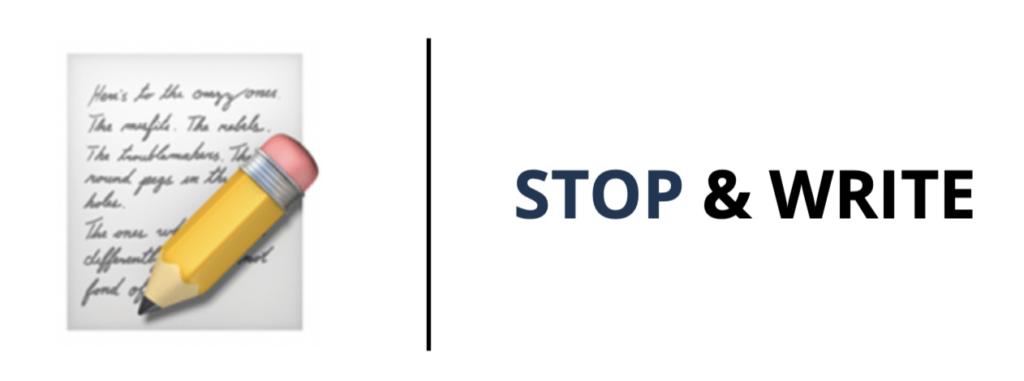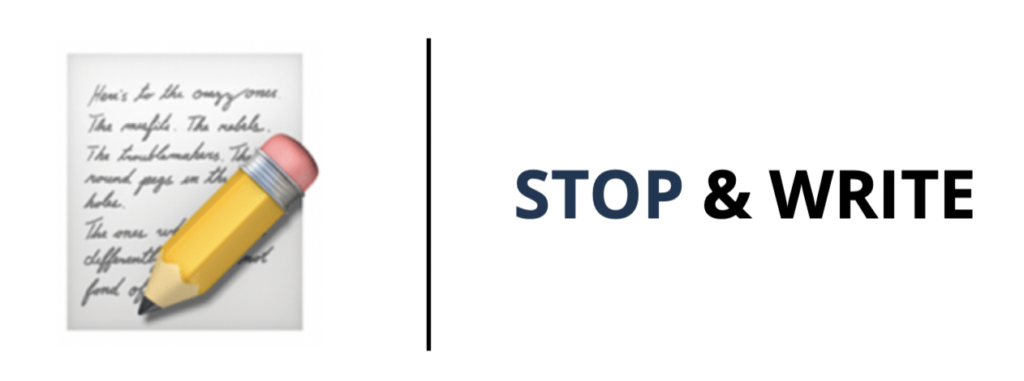~ A Module for Learning ~

Welcome to the Drew Writing Project/NEH Grant “Building a More Perfect Union” workshop series on Artifactual and Historical Literacies!
Module Description: This Module engages you in an integrative approach to historical and artifactual literacies, emphasizing creativity, literacy development, and diverse perspectives. The lessons used in this module have been successfully implemented with elementary school students but could be adapted for adolescents.
In order to be successful with the module, you will need access to the following:
- A journal or digital device for writing
- An object that is interesting to you
- Your imagination

Throughout the module, you will see this icon on the left. There will be multiple times for you to stop and write. Use your journal or digital device.
Please watch the video below. If you have any issues playing it, please click here.

How do you incorporate literacy and the arts into content areas?
Additional Reading: Creating Connections: Integrating the Visual Arts with Social Studies.pdf
Important Points
- Art can help students develop a better understanding of concepts.
- Students can tap into other forms of intelligence such as visual, spatial, musical, kinesthetic and interpersonal.
- Make sure that teachers understand the significance of using both social studies and visual arts standards.
- Create performance based assessments that measure both social studies and arts concepts. Make criteria clear and easy for students to understand.
- Also try to create varied and differentiated activities for each student. (Podcasts, drawings, graphic novels, etc.)
Investigating Artifacts with Access Lenses
What are the Access Lenses?
Watch this short video by Trevor Bryan, author of The Art of Comprehension, to see how Access Lenses can help students to use textual evidence to support thinking.

What do you notice about the Access Lenses?
What questions arise for you as you consider bringing them into your classroom?
Using the Access Lenses to Analyze Objects and Images
Students can use Access Lenses to investigate and analyze objects and images.
Here is an example of how the Access Lenses were used to introduce the unit, The Settlement of America.

Please watch this video or click on it below

Now try it by analyzing the picture below!

What are your initial impressions of this photo? How does it make you feel? What story does it tell?
Describe what you see in the photo using two different Access Lenses:
- Colors (Dark vs. Light)
- Zoom In vs. Zoom Out
Are there other Access Lenses you can apply to this photo?
How does your use of Access Lenses change your impressions of the photo?
See Keri’s analysis of the photo using Access Lenses.
Extend your writing: (Quick Write example)
Using the image as inspiration, as well as the details you documented using the Access Lenses, write for 5 minutes about the image. It can be a short story, poem/prose, song, or other type of writing.

How does using Access Lenses help you to see details (or evidence) that you might otherwise miss?
Additional Reading: The Art of Comprehension: Exploring Visual Texts to Foster Comprehension, Conversation, and Confidence – Literacy Lenses

What are some activities you can use to create a visual representation of the successful integration of social studies and the arts?
Google Site Infographic
Infographics are visual representations of information, data or concepts to quickly and clearly present. Using a digital/online tool such as Google Sites, students designed a presentation and then a writing piece based on ONE Artifact. Their goal is to highlight or mention the artifact.
In this example, the student did a presentation about the Inuit Native Americans. He then created a short writing piece based on one of the artifacts in his presentation.
Let’s take a look at his work!
Please click on the link below.
Task Uncovered: Making the Connection Between Historical & Artifactual Literacies

Use the image below as inspiration!
TO DO:
- Use the Access Lenses to analyze the artifact.
- Create an Infographic presentation about the artifact.
- Using the artifact/picture as inspiration, write a short story, poem/prose, song or other type of writing. Be creative!

